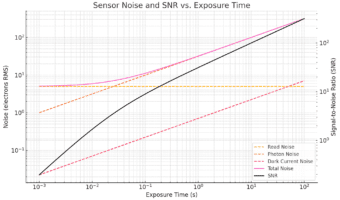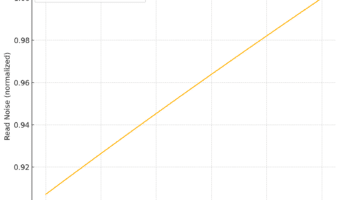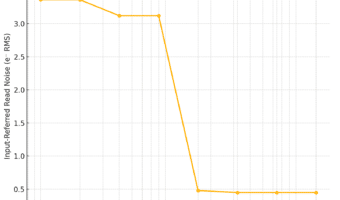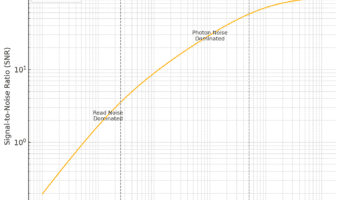When you increase the exposure time in a digital camera, you expect to collect more signal. But what happens to the noise? The answer depends on the source of the noise. Understanding how each one scales with exposure time helps you optimize your imaging strategy, especially in low-light or long-exposure situations. Let’s look at the… [Read More]
Archives for May 12, 2025
Dark Current in CMOS Sensors: Where It Comes From, and How Cooling Helps
In low-light or long-exposure photography, one of the most persistent sources of unwanted signal is dark current: thermally generated electrons that accumulate even in total darkness. Unlike read noise, which is largely constant from frame to frame, dark current grows with exposure time and varies from pixel to pixel. Dark current is the rate at… [Read More]
What cooling can, and can’t, do for CMOS read noise
Cooling a CMOS sensor reduces noise. But which noise? By how much? And is it worth the effort for your application? Let’s break it down by examining what cooling affects — and what it doesn’t — in the readout chain. What Do We Mean by “Read Noise”? Read noise includes all non-random and random noise… [Read More]
Read Noise in CMOS Sensors: dual conversion gain
Read noise sets the lower limit of a sensor’s usable dynamic range. It encompasses all noise sources between the pinned photodiode (PPD) and the final digital output. For modern CMOS sensors, this path is often split into two readout modes via dual conversion gain (DCG). Read noise includes: Reset noise at the floating diffusion (kTC… [Read More]
Photon Transfer Curves: a unifying tool for analyzing sensor noise
The Photon Transfer Curve (PTC), popularized by James Janesick in Photon Transfer, is a powerful tool for characterizing image sensors. It relates mean signal level to signal variance, capturing the behavior of multiple noise sources across the full dynamic range. The Basic Idea Plot the variance of the pixel output against the mean signal level… [Read More]




